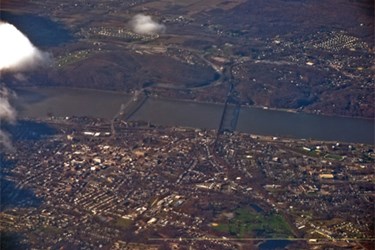Plan To Drink Hudson River Water Sits Uncomfortably With Some

By Sara Jerome,
@sarmje

The push for a treatment plant that would collect water from the Hudson is stirring up controversy in New York.
"Opponents question the need for the plant, its costs and whether public health can be safeguarded considering the presence of pollutants in the water," Gannett's The Journal News reported.
The proposal comes from United Water New York, which wants to build a $130 million plant in Haverstraw, a town just west of the Hudson River. The utility serves most of Rockland County, home to over 300,000 people.
“I can tell you with certainty that Rockland needs more water,” United Water New York Vice President and General Manager Michael Pointing said at a recent hearing on the issue, according to The Journal.
But ever since the plant was proposed, the idea of drinking Hudson River water has sat uncomfortably with some residents. "Would you drink water from the Hudson River?" WCBS 880 asked. The proposal "leaves many with a bad taste in their mouths and concerns about the quality of our drinking water," said an editorial by a local environmental group known as SPACE.
The utility has maintained the water can be sufficiently cleaned. "We are confident that we will be able to purify water to meet or surpass all government safe drinking water standards,” a United Water official said in WCBS.
The water quality in the Hudson River has improved in recent years. Some people choose to swim in the river, although areas are designated "no swim areas" because of dredging.
The state Department of Health advises swimmers on general tips for reducing their risks: "Don't swallow water and consider keeping your face and head out of the water when swimming. This reduces exposure to bacteria, parasites and other microorganisms that might make people sick by entering the body by swallowing, and through eyes, ears and nose."
Riverkeeper, an advocacy group for clean water in New York, released an app that keeps locals apprised on the cleanest places to swim in the river.
Despite cleanup efforts, the state Department of Environmental Conservation said many problems remain: "These include accidental sewage discharges and sewer overflows during power outages and wet weather events. Overflows occur in many places that have combined sewer and storm drains which flood during periods of heavy rainfall."
Population growth is not helping. It "has pushed existing sewage treatment plants to their maximum capacity, and many along the river need to be upgraded," the department said.
The Cary Institute of Ecosystem Studies points out that some people already do drink water that passes through the Hudson, if they follow their tap water back a few steps. For people in Poughkeepsie, NY, "that means starting with the Hudson River, since Poughkeepsie is the southernmost municipality able to source its drinking water above the river’s tidal salt surge."
In other words, the institute said, "their drinking water originates from the same river into which wastewater is discharged."
Image credit: "Poughkeepsie and the Hudson, New York," © 2008 Phillip Capper, used under an an Attribution 2.0 Generic license: http://creativecommons.org/licenses/by/2.0/
